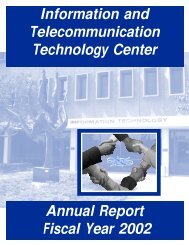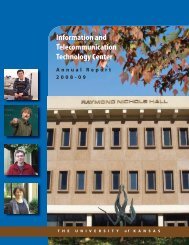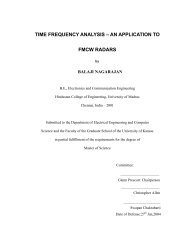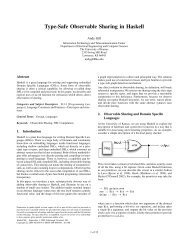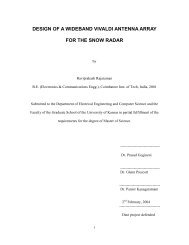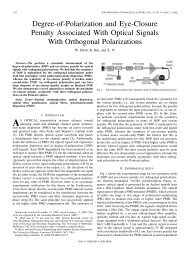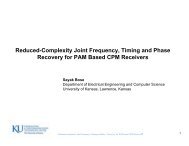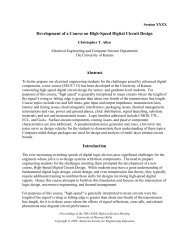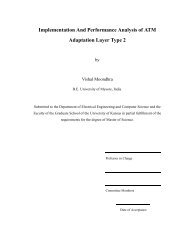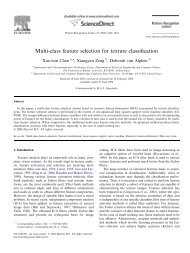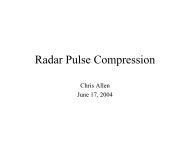Experiments and Simulations of TCP/IP Over ATM Over a High Data ...
Experiments and Simulations of TCP/IP Over ATM Over a High Data ...
Experiments and Simulations of TCP/IP Over ATM Over a High Data ...
Create successful ePaper yourself
Turn your PDF publications into a flip-book with our unique Google optimized e-Paper software.
Experimental <strong>and</strong> Simulation Performance Results <strong>of</strong> <strong>TCP</strong>/<strong>IP</strong> over <strong>High</strong>-Speed <strong>ATM</strong> over ACTS, by Charalambous P.C. 16<br />
equal to the MSS size. The most important parameter that had to be calculated for the<br />
experiments, using equation (2), was the upper limit <strong>of</strong> the <strong>TCP</strong> window or equivalently<br />
the send <strong>and</strong> receive socket buffer sizes. This parameter was passed to the operating<br />
system kernel via the setsockopt system level function by the application level network<br />
performance tools (Netspec, ttcp) that were used to test the network capacity.<br />
Netspec <strong>and</strong> ttcp were the performance evaluation tools used throughout the experiments.<br />
T<strong>TCP</strong> was created at the US Army Ballistics Research Laboratory <strong>and</strong> can<br />
measure the throughput <strong>of</strong> a connection between two hosts using <strong>TCP</strong> or UDP (User<br />
<strong>Data</strong>gram Protocol). It is a useful <strong>and</strong> easy to use program. It is able to perform full<br />
rate experiments between two hosts only.<br />
Netspec is a more sophisticated tool created by researchers at the University <strong>of</strong> Kansas<br />
[16]. It provides a block structured language for specifying network experiments <strong>and</strong> can<br />
support several connections (both <strong>TCP</strong> <strong>and</strong> UDP), as well as different types <strong>of</strong> trafc<br />
(CBR, VBR, MPEG, FTP) at full <strong>and</strong> constant rates.<br />
6.1 Parameters <strong>and</strong> results from scenario 1<br />
In this scenario, as shown in Figure 1, an OC-3 satellite link was established between<br />
the TIOC (Technology Integration <strong>and</strong> Operation Center) <strong>and</strong> GSFC. The BER in the<br />
satellite links was measured to be in the range <strong>of</strong> 10 ,11 at the TIOC <strong>and</strong> 10 ,13 at GSFC<br />
throughout the experiments.<br />
This is an almost error free OC-3 link, similar to the<br />
specications <strong>of</strong> terrestrial ber networks. The round trip time (RTT), that is the path<br />
latency between the two hosts, was measured by the program ping to be 534 ms on an



